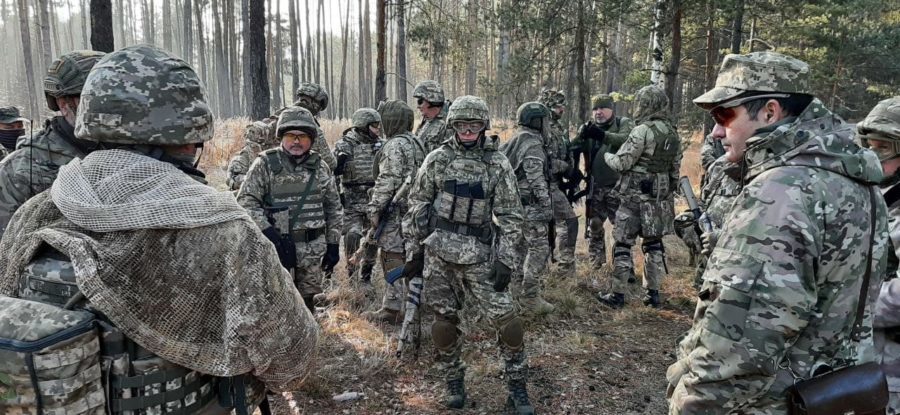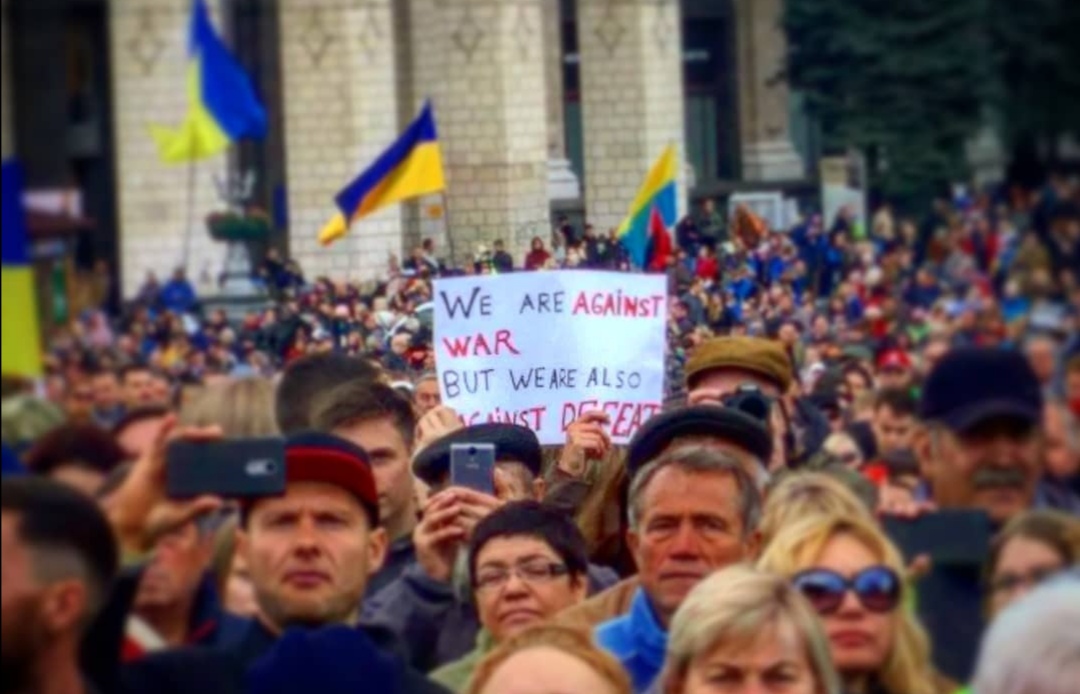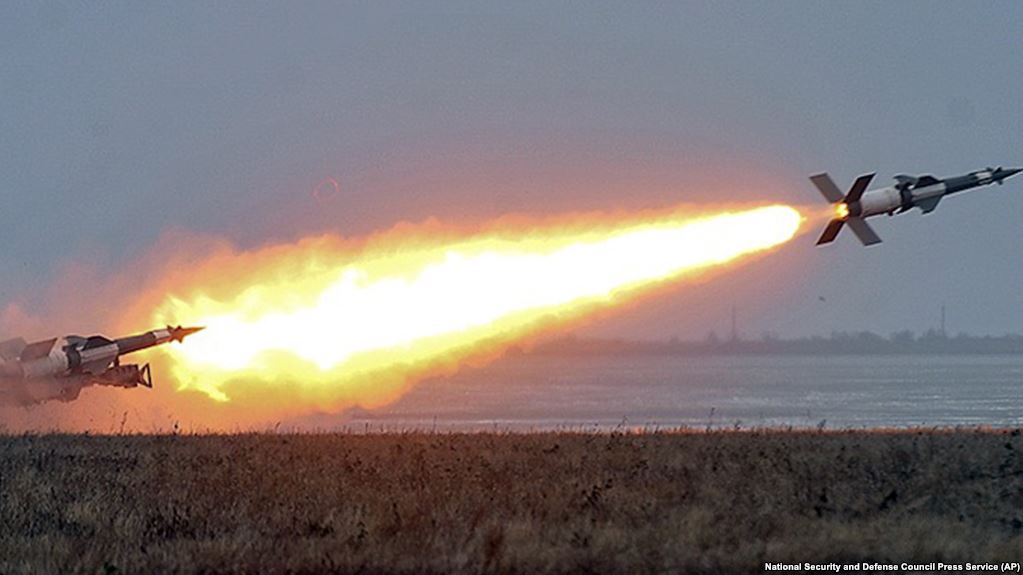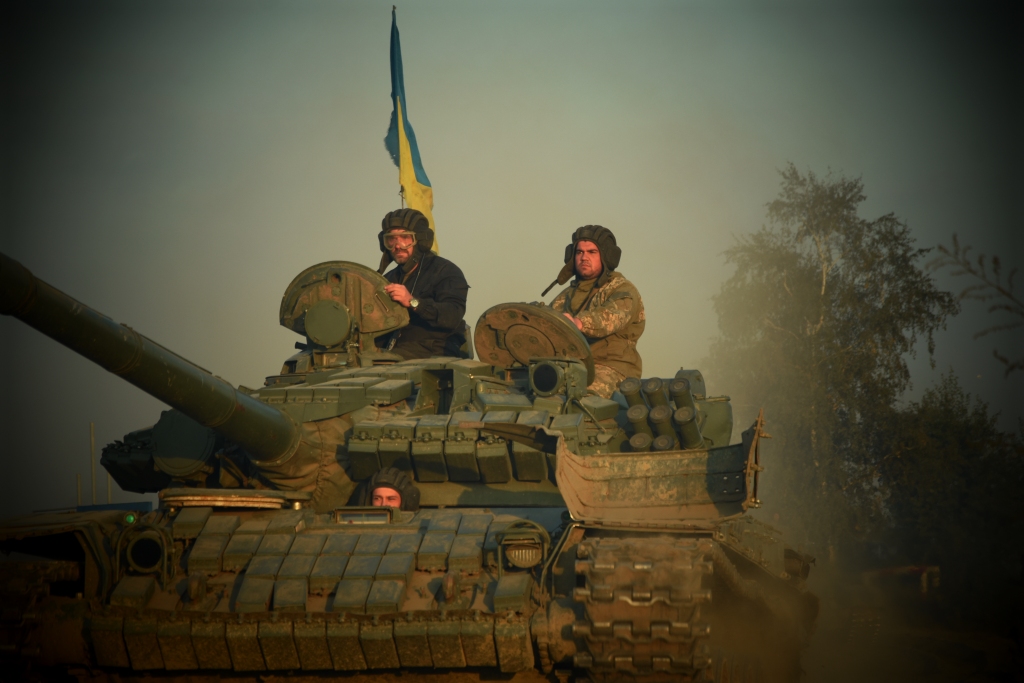On 12 February, Ukrainska Pravda published an analysis prepared by the experts of the Center for Defense Strategies, Andriy Zagorodniuk, Alina Frolova, Oleksiy Pavliuchyk, and Viktor Kevliuk, titled “Is an invasion of Ukraine possible? What are the prospects for Russia’s offensive.” The original text of the study is available in Ukrainian, the full English translation was published by Kyiv Independent.
Here we summarize the major points of the sections of the analysis, related to the current situation in and around Ukraine.
General operational situation around Ukraine
According to the authors of the analysis, Russia massed 87 battalion-tactical groups (BTG) or about 147,000 troops including air and naval personnel near Ukrainian borders and in the occupied parts of Ukraine as of 12 February. Of those, about 15 BTGs “and other units” are deployed in Belarus, including a short-range ballistic missile brigade.
In the course of Russia’s military buildup ongoing for several months, the total number of the BTGs doubled, and that of the military personnel was raised by 50% as compared to November 2021, when there were 41 battalion-tactical groups or 94,000 troops, according to the report’s data.
The Russian military stationed on Ukraine’s borders gets involved in drills, is properly equipped, and has access to logistical and medical support, but “there are no signs that they have the additional reinforcements needed for a large-scale offensive.” Nevertheless, the recent weeks saw a significant increase in the combat readiness of the troops.
Most and least likely scenarios
- A large-scale offensive to occupy all of Ukraine or its significant part: unlikely, since the accumulated force is insufficient for that. If Russia doesn’t prepare hundreds of thousands of troops with strategic reserves and mobilized soldiers, “such scenarios are unlikely in the foreseeable future,” the experts believe. Moreover, the operation would result in international isolation and more sanctions against Russia.
- Local scenarios to capture separate cities and areas: unlikely, “due to a lack of political expediency.”
- Some hostilities in certain areas: possible “in order to distract Ukraine’s defense forces.”
- Scenarios of massive bombing and missile strikes: unrealistic since they could lead to high civilian casualties thwarting the Kremlin’s plans to win the hearts and minds of Ukraine’s Russian speakers.
- Individual missile and airstrikes on military or infrastructure facilities: possible “only as a means of supporting ground operations or as a means of psychological pressure.”
- An attempt to organize a trigger event: plausible, as a planned provocation could legitimize the entry of Russian troops into the Ukrainian territory of Ukraine.
- Escalation in eastern Ukraine: highly probable.
- Scenarios of hybrid invasion without a military component (terrorist attacks, sabotage operations, cyber-attacks): highly probable.
An attempt at such an operation would face significant problems with the movement of heavy equipment thanks to the warm weather and mud.
The likelihood of a potential attack on Kyiv is considered below as a separate issue.
Situation in the Black and Azov Seas
Russia mustered 12 large landing ships from all Russian fleets in the Black Sea. The landing craft flotilla is capable of landing two brigades of marines (some 4,000 troops) with armored vehicles (up to 250 pieces) on Ukraine’s Black sea coast. They “could pose a threat of Russian operations in southern Ukraine” together with airmobile and airborne troops gathered in Crimea.
Planned for 13 to 19 February, Russia’s upcoming nearly complete blockade of the Black Sea and possibly the Sea of Azov is “a test of Russia’s capabilities and the consequences of such actions.” The experts give a negative forecast for the developments in Ukraine’s seas,
“If the world does not react harshly to such a provocation, it is only a matter of time before it is repeated,” the analysis reads.
Russia cancels scheduled Azov Sea blockade, Black Sea still to be blocked
Scenario of capturing Kyiv amid Russia’s invasion
According to the experts, the key goal of aggression is to gain full control over Ukraine, which would seem easier after capturing the country’s capital, Kyiv. The total strength of Russian units deployed in Belarus and in Russia near the northern border of Ukraine “is theoretically sufficient for the implementation of the ‘Kyiv scenario’.”

However, this is “only in theory,” as this is too risky for Russia, the experts argue:
- An attempt to break through Ukraine’s northern oblasts would end up in huge losses. The scenario of capturing Kyiv isn’t “more budget-friendly” than a full-scale invasion, given Ukrainian human and material resources for Kyiv defense. Such an offensive would be very slow.
- Gaining control of a metropolis of 3,000,000, many of whom are ready to resist, is an “unrealistic task, given the required number of troops, which is currently not observed near the border.” Kyiv’s complex topography makes it hard to isolate, plus, resistance groups from all over Ukraine would Rjoin making it impossible for Russia’s invasion to result in long-lasting control of the capital.
- Russia’s hopes to have support for its offensive by a Ukrainian domestic “fifth column,” the experts believe, “are in vain,” because unlike in 2014, “Ukraine already knows what to do with Kremlin allies professionally, firmly, and quickly.”
- A democratic Ukraine would “survive even if the capital is seized,” and any “puppet” government won’t gain Ukraine’s or the world’s recognition.
- Any scenario of capturing Kyiv wouldn’t be unexpected.
Readiness of Ukrainian security and defense forces
According to the estimates of the authors of the analysis, “the level of Ukraine’s readiness has increased significantly in recent times” amid the looming threat of Russia’s invasion:
- The level of armament hiked, among other things thanks to the recent weapon supplies from Ukraine’s allies.
- Some Ukrainian troops moved closer to the border of Belarus.
- Ukraine is carrying out large-scale exercises to coordinate actions in the case of Russia’s invasion.
- The newly-created Territorial Defense Force started their training and deployment.
“This level of preparation indicates that the implementation of any of the above scenarios, and especially the capture of Kyiv, has become much more difficult for Russia,” the experts believe.
Additionally, the West would immediately activate “hellish” sanctions and intensify its assistance to Ukraine in case of Russia’s invasion.
“All these factors make the scenario of an attack on Kyiv unlikely,” the study concludes.
The conclusions of the Center are similar to an analysis of military expert Hans Petter Midttun, who argues is highly unlikely Russia will launch a full-scale invasion and an occupation of Ukraine. Not because it cannot be done – because it can – but because it’s not needed, it is counter-productive, costly, and extremely risky.
As well, Middtun notes that the possible invasion is not the real issue, as Russia’s new wave of hybrid war destabilization needs a three-dimensional approach.
The next phase of the Hybrid War, or why Russia is unlikely to invade Ukraine
Further reading:
- The next phase of the Hybrid War, or why Russia is unlikely to invade Ukraine
- The possible invasion is not the real issue. Russia’s new wave of destabilization needs a three-dimensional approach
- Thousands march in Kyiv to warn Putin he will fail in Ukraine
- How weapons from allies would help Ukraine fend off Russia’s invasion
- Military buildup registered at nearly half of Russian bases at Ukraine’s border in late 2021, satellite image project shows
- Ukraine now ready to fight Russia, “unlike 2014,” top brass says
- Why does Germany refuse to export arms to Ukraine?
- Russia’s military buildup on Ukraine’s border “on par” with that of April, say online sleuths (Nov 2021)
- Germany exports dual-use products to Russia despite EU sanctions, beefing up Russian military






